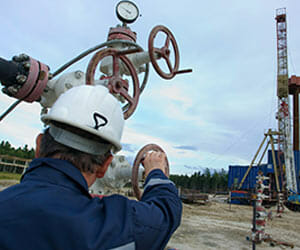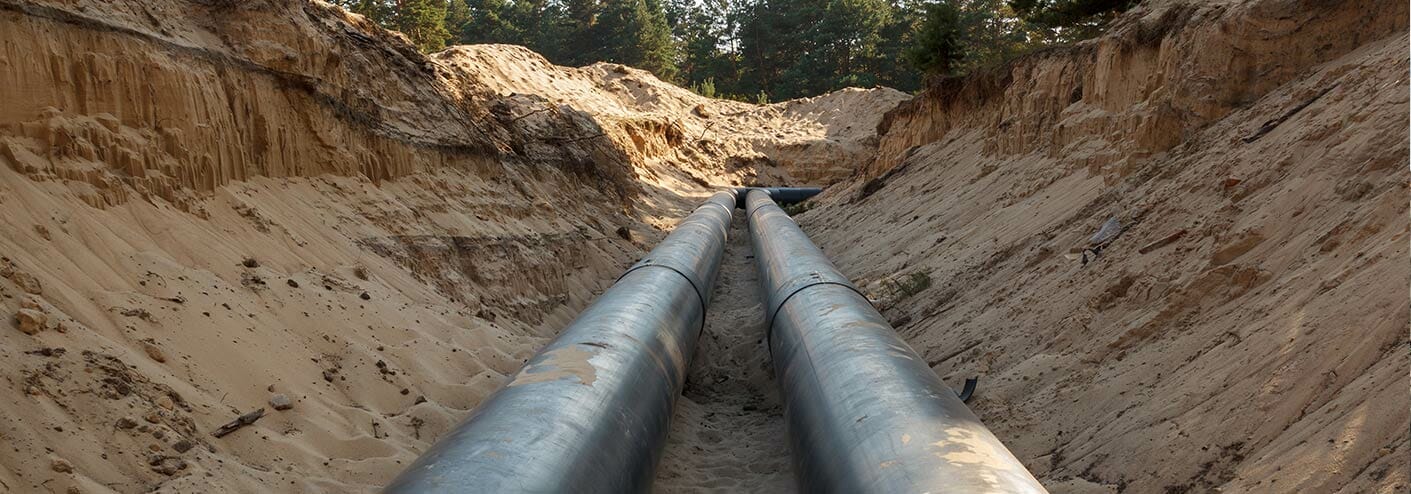Natural Gas Worker Dangers
we focus on representing individuals, not large corporations, institutions or insurance companies
As the economic outlook for the coal industry dims, other products, like natural gas, are helping to boost the economy of Eastern Kentucky. More than 6,500 natural gas wells are located in Pike County, along with three transmission lines to carry the product.
According to figures from the Kentucky Oil and Gas Association, nearly 31,000 Kentuckians are employed by the oil and gas industry, producing nearly $630 million in revenue in 2013; almost one third of that came from Pike and Floyd Counties. Over the span of ten years (2002-2012) Pike, Floyd, Knott and Letcher counties each produced over 100 billion cubic feet (Bcf) of natural gas.
 In the fall of 2014, the Commonwealth approved $18 million in tax incentives for the building of a proposed natural gas-to-synthetic fuels plant in Pike County. If and when it is built, it will convert natural gas to synthetic diesel fuel, synthetic base oils and lubricant oils, and synthetic naphtha.
In the fall of 2014, the Commonwealth approved $18 million in tax incentives for the building of a proposed natural gas-to-synthetic fuels plant in Pike County. If and when it is built, it will convert natural gas to synthetic diesel fuel, synthetic base oils and lubricant oils, and synthetic naphtha.
Eastern Kentucky needs more industry, but with it always comes the risk of occupational injuries and deaths for workers whose labors bring the natural resources to the surface and the revenue to the company coffers. When the hardworking men and women of Eastern Kentucky are injured on the job, they often call the Johnson Law Firm in Pikeville for help obtaining compensation for their injuries. If you are an oil and gas worker who has suffered a workplace injury, call 606-437-4488 or use our online form for a free and confidential discussion about how we can help you.
Oil and gas industry injuries and deaths
Oil and gas extraction can be extremely dangerous both for employees and for nearby residents. According to the Bureau of Labor Statistics, the national fatality rate for oil and gas workers in 2012 was 24.2 deaths per 100,000 workers. What does that mean? It means that oil and gas workers are at a higher risk of death than construction workers, coal miners, and those employed in agriculture, forestry, fishing and hunting.
The Chemical Safety Board (CSB) is an independent federal agency charged with investigating industrial chemical accidents, including those in the oil and gas industry. They report that during the 2009-2013 period, there were 1,285 incidents at oil and gas installations that resulted in injuries to workers, deaths, evacuation, damage of more than $500,000 to the facilities or “acute environmental damage.”
Fires and explosions
The publication EnergyWire reports that the oil and gas industry has more deaths from fires and explosions than any other private industry. Although it employs less than 1 percent of the workforce nationally, more than 10 percent of all workplace fatalities from fires and explosions have been in the oil and gas industry. The only occupational sector to have more fire and explosion fatalities in 2013 was firefighting.
Causes of oil and gas explosions are:
- Well blowout, drilling/tripping out/swabbing resulting in release of gas ignited at the surface
- Welding or cutting near combustible materials
- Uncontrolled ignition sources like heaters
- Unapproved or poorly maintained electrical equipment
- Aboveground detonation of perforating gun.
Many natural gas explosions could have been prevented if proper procedures and safety mechanisms were in place. Companies have a duty to provide sufficient training and safe equipment to their workers, and when they fail to do so they can be held liable for resulting injuries and deaths.
Victims of natural gas explosions may suffer one or more of the following types of injury:
- Severe burns
- Crushed limbs and amputations caused by the force of the explosion and/or falling debris.
- Head trauma leading to brain and/or spinal cord injuries
- Hearing damage or loss.
Other hazards for oil and gas workers
While fires and explosions cause about 15% of fatal injuries in the oil and gas industry, several other hazards can result in fatalities or serious injuries.
The No. 1 cause of oil and gas injuries is involvement in a transportation accident, accounting for about 40% of fatal events. Other safety and health hazards and dangerous conditions facing oil and gas workers are:
- Being struck by falling/moving pipe; tongs and/or spinning chain, hoses, tools/debris dropped from elevated location
- Caught-In/Caught-Between accidents involving collars and tongs, spinning chain, pipe, and rotary table/drill string
- Falls
- Confined spaces
- Exposure to chemicals.
Compensation for injuries
Oil and gas accidents generally occur at work sites where the employee is covered by workers’ compensation. Workers’ compensation is not likely to cover all the expenses associated with a severe accident. This is why the Johnson Law Firm knows to carefully analyze the details of each occupational accident — if a third party is involved, such as a vendor, subcontractor or equipment manufacturer — we can file a lawsuit on your behalf to obtain monetary damages in addition to workers’ comp.
In Pike County, For All Kentuckians
 At the Johnson Law Firm, we focus on representing individuals, not large corporations, institutions or insurance companies. When a worker has been injured or killed — whether in Pike County or elsewhere in the state — we work hard to see that the family receives compensation from those who shirked their duty and through negligence or greed created the dangerous situation that led to harm. If you or your family member has been the victim of a natural gas or oil accident, call Billy Johnson at 606-437-4488 or fill out this form to begin your journey to justice.
At the Johnson Law Firm, we focus on representing individuals, not large corporations, institutions or insurance companies. When a worker has been injured or killed — whether in Pike County or elsewhere in the state — we work hard to see that the family receives compensation from those who shirked their duty and through negligence or greed created the dangerous situation that led to harm. If you or your family member has been the victim of a natural gas or oil accident, call Billy Johnson at 606-437-4488 or fill out this form to begin your journey to justice.



 William “Billy” Johnson grew up in the Dorton area of Pike County, Kentucky, and early on decided to stay in the beautiful Appalachian mountains. Like many others in Eastern Kentucky, Billy’s dad worked as a coal miner, a hard job but one that taught his son how to meet challenges head on and persevere. Attorney Billy Johnson has years of experience helping injured clients with claims such as car, truck, and motorcycle accidents, wrongful deaths, work injuries, and more. [
William “Billy” Johnson grew up in the Dorton area of Pike County, Kentucky, and early on decided to stay in the beautiful Appalachian mountains. Like many others in Eastern Kentucky, Billy’s dad worked as a coal miner, a hard job but one that taught his son how to meet challenges head on and persevere. Attorney Billy Johnson has years of experience helping injured clients with claims such as car, truck, and motorcycle accidents, wrongful deaths, work injuries, and more. [ 



